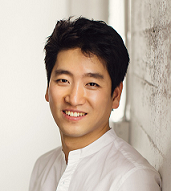
Learning motor skills often takes a lot of initial effort, but becomes easier over time – like learning to play the piano, swim or ride a bike. According to a recent study conducted by Feinberg postdoctoral fellow Sungshin Kim, PhD, different regions of the brain are associated with the short and long-term timing of motor memory.
The findings, published in PLOS Biology, may inform future strategies to rehabilitate the motor skills of patients who have suffered from brain damage.
“By providing the basic neural mechanisms of motor learning, this study could be applied to develop more efficient therapy to help patients with impaired motor functions – such as stroke patients – recover their lost motor skills,” said Kim, a fellow in the Department of Medical Social Sciences.
Kim completed the study while he was a student at the University of Southern California (USC). The research, led by principal investigators Nicolas Schweighofer, PhD, of USC, and Hiroshi Imamizu, PhD, of the University of Tokyo, is part of ongoing work supported by the National Science Foundation (NSF) at USC.
To show how motor learning unfolds over time, he and colleagues at USC measured the brain activity of 21 healthy study participants as they performed simple visual-motor tasks. Functional magnetic resonance imaging (fMRI) revealed where in the brain fast and slow adaptation to the tasks took place.

“Previous computational modeling and behavioral experiments discuss the multiple timescales of motor memory, but little has been known before about the underlying neural mechanisms,” Kim said. “We identified the spatial distribution of motor memories with different timescales across the brain.”
In the study, fast learning was associated with activity in the prefrontal and parietal lobes as well as the posterior cerebellum. Intermediate and fast learning were associated with the inferior parietal region and the anterior-medial cerebellum, respectively.
“Consistent with previous studies, frontoparietal regions of the brain updated their states fast, like the cache memory of a computer system,” Kim explained. “The anterior part of cerebellum updated slowly, storing motor skills long-term, like the hard disk of a computer system.”
The findings could explain why some skills are easily forgotten without continuous practice, while others are remembered longer.
“Acquiring motor skills fast in the beginning could be due to activation of motor memory with this fast timescale. On the other hand, acquiring motor skills and almost never forgetting them – like riding a bicycle – could be due to stable activation of motor memory with long timescale,” Kim said.
The research was supported by NSF grants 1031899 and DMS-0955316, Japan Society for the Promotion of Science grant 26120002, the Japan Agency for Medical Research and Development and the ImPACT Cabinet Office of Japan.






